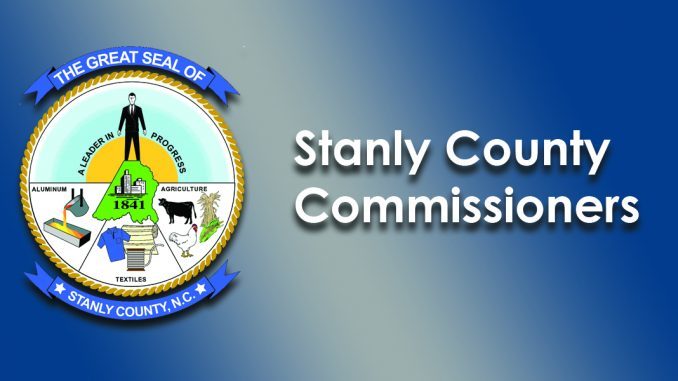
ALBEMARLE — Following a unanimous vote by the Stanly County Board of Commissioners on Monday night, county restrictions for solar panel farms will tighten.
The Stanly commissioners agreed to amend an ordinance (Section 618: ‘SEPGS’ Solar Energy Power Generating System) with added zoning restrictions that were recommended by the county’s planning and zoning board.
While much discussion was had regarding the nature of the new requirements, the commissioners ultimately passed the amendment after making two alterations.
“I can assure you that the regulations as proposed are designed to help four things,” John Skvarla, former N.C. Secretary of the Department of Environmental Quality, said during the public hearing.
“One is health and safety. We have to think forward,” Skvarla continued. “Two is about our first responders. We’ve talked about fires, and that is an immediate issue. Thirdly, the environment. Last but not least and probably the most important, what are the unforeseen burdens on taxpayers?”
According to a memo from County Zoning Board Vice Chairman David Underwood, the restrictions are “likely the most stringent ordinance in North Carolina regarding solar farms.”
“This isn’t a solar ordinance; this is a ‘kill solar’ ordinance,” Commissioner Tommy Jordan said. “I think we need to be very clear about what the goal of this is — to be sure that there is never a solar farm in this county after this ordinance passes — because I don’t think there could be.”
Jordan argued that that the new plan is “incredibly restrictive” and that other places in the county will not benefit from solar technology because of the “over-the-top” requirements.
“It actually came as a request from the board of commissioners that we look at this language and strengthen the information and requirements for the solar overlay district which is primarily for solar farms,” Stanly County planning director Bob Remsburg said.
Remsburg told the board that a current solar project in Badin, a Stanly Solar project on Old Aquadale Road and an Orion project north of Pfeiffer University will all three be grandfathered into the county’s new system.
Commissioner Mike Barbee agreed that the new solar farm requirements are extensive but ultimately necessary for the county. Barbee told the board that the regulations assist both the taxpayers and the county while protecting the landowners with added assurance of getting their land replaced if a company goes out of business.
The new regulations include clarifications between major and minor SEPGS systems, an increase in required setbacks of all structures and fencing from 10 feet to 250 feet and an increase in the required buffer width from 10 feet to 100 feet.
With a 4-3 vote, the board amended an item in the memo that would have required the installation of fire hydrants every 500 feet around the perimeter of the solar farm.
Chairman Matthew Swain and Commissioners Zach Almond and Bill Lawhon voted against the motion to amend, while Commissioners Lane Furr, Mike Barbee and Jordan each voted in favor of allowing solar farm applicants to develop plans with the fire marshal’s office instead.
Attorney and gubernatorial candidate Richard Vinroot and Mike Ellison of the W.K. Dickson Company were among the public hearing speakers who agreed with the new ordinance.
While other counties have developed protective restrictions, the proposed rule would be the first time a county has looked to experts’ opinions to define a “reasonable ordinance with protections to deal with the things that will happen when these things finish their life and leave you with the aftermath,” Vinroot said. “This county really ought to do it right; you have a lot to protect and you have a good reason to do so.”
Arguing against the solar restrictions, Ecoplexus, Inc. director of community engagement Phillip Martin and local resident Wayne Coble said that the ordinance is “skewed” and “inconsistent.”
